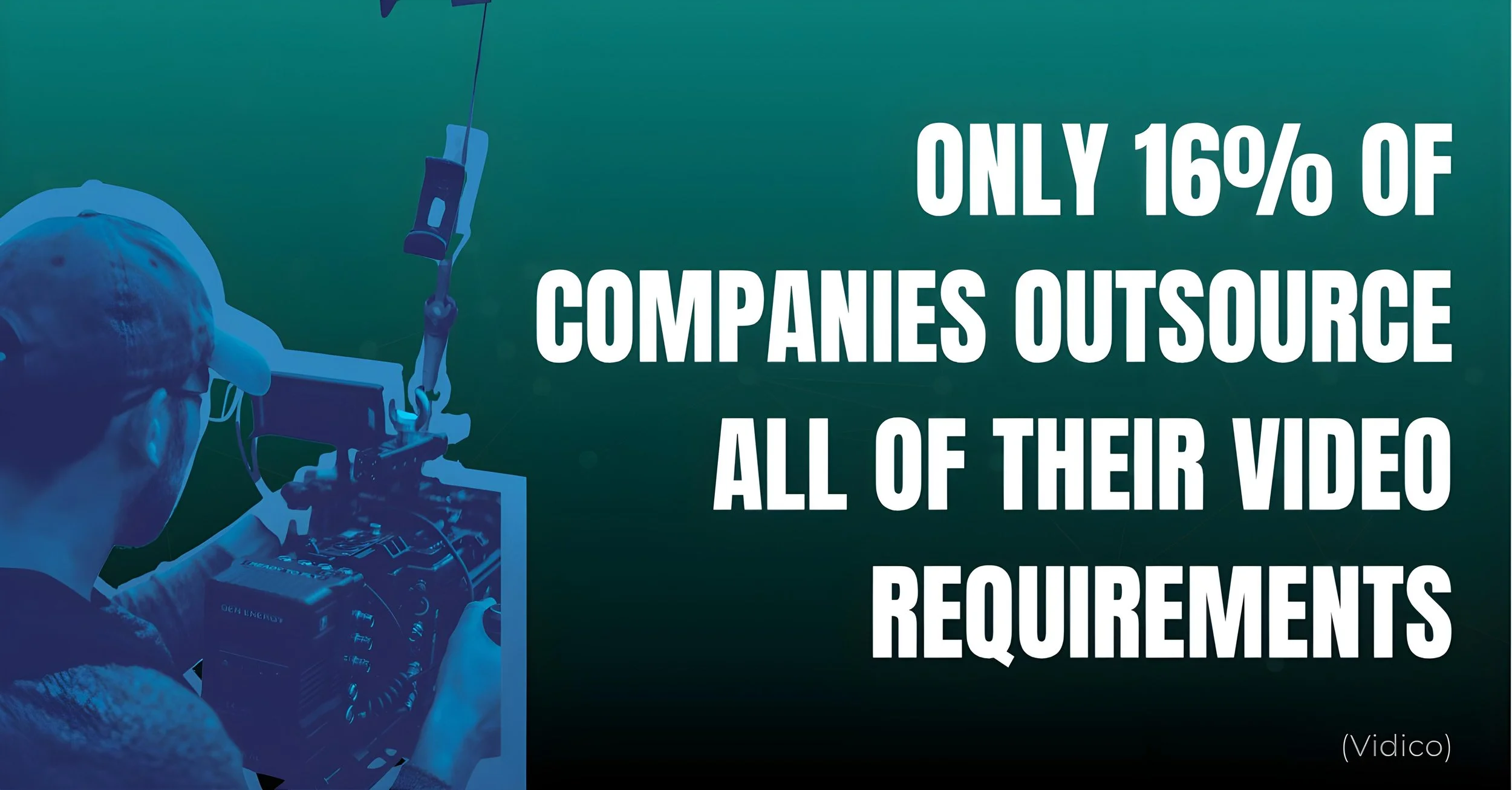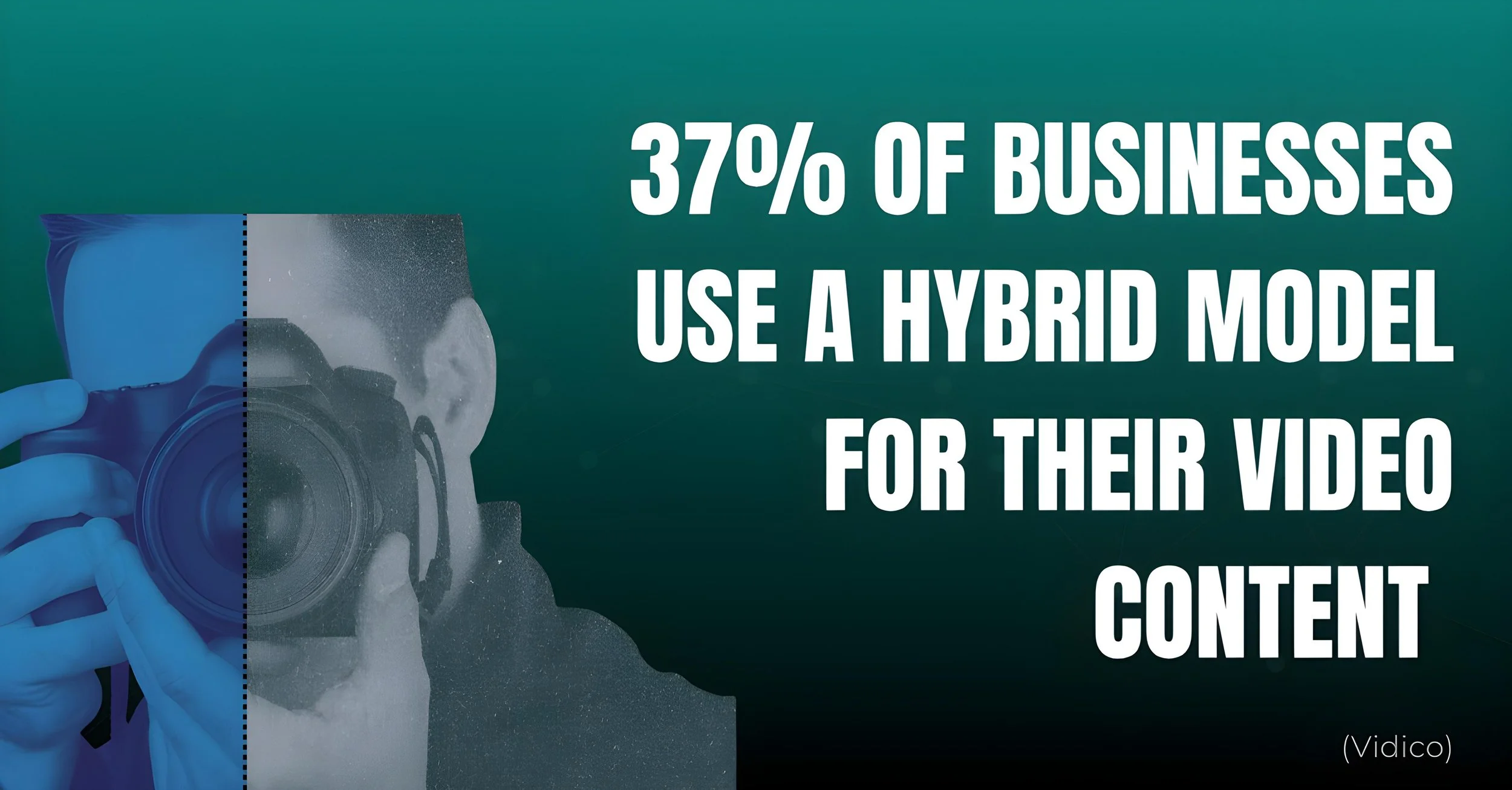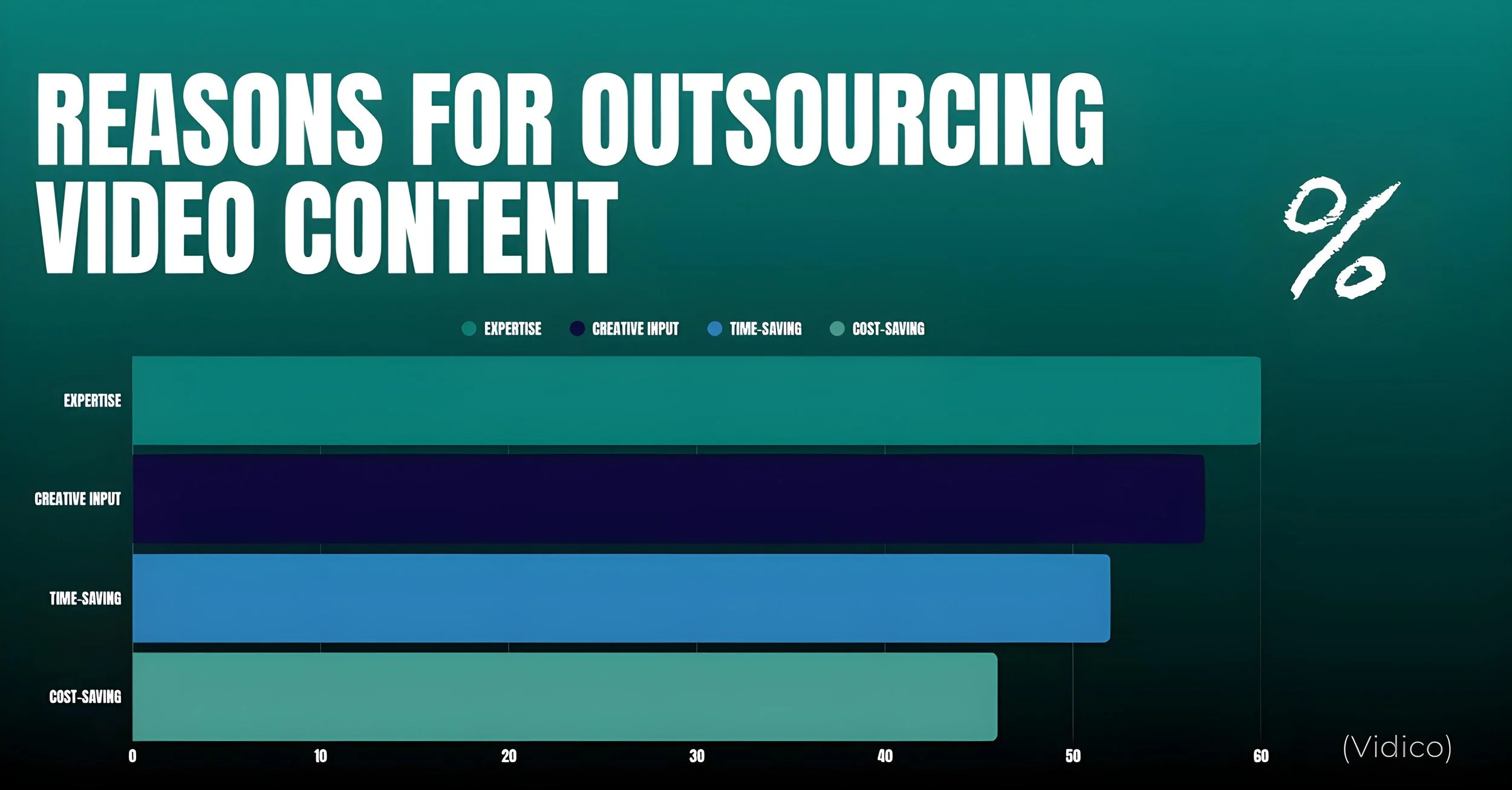When to Outsource Video Content and When to do it In-House
Ahh, to outsource video production or to manage it in-house, the eternal question.
Of course, working for Treefrog Marketing, a video production and marketing agency, law dictates that I should proceed to tell you that you must outsource for each and every project (preferably to Treefrog), right?
Wrong.
You don’t always need to outsource video content, of course you don’t. Sometimes it doesn’t make financially, sometimes you don’t have the prep time to reach out to videographers, and sometimes, I hate to break it to you, the content isn’t worth filming…
But that’s obviously not to say you should never outsource your video requirements (Somewhere, my boss just sighed a breath of relief). The truth is, both options are fantastic; after all, video content is some of the most engaging, persuasive, and ROI optimised media assets out there.
The truth is, both options have their perks and their pitfalls. So, let’s break down when it makes sense to keep video production in-house, and when outsourcing will actually save you time, money, and a few grey hairs.
WHEN TO CREATE VIDEO CONTENT IN-HOUSE
Let’s start with the DIY route.
If you’ve got a team that’s creative, tech-savvy, and has the time (and patience) to plan, shoot, and edit, doing video in-house can be a huge advantage.
Here’s when it makes the most sense:
1.YOU NEED AGILITY AND SPEED
Quick turnarounds for reactive content like trending TikToks, stories, or behind-the-scenes snippets are perfect for an in-house setup. You can film, edit, and post the same day without waiting for an agency brief or schedule.
A general rule of thumb is that if you think you can film the content on your phone, and it will still be as digestible and good enough quality to reach effectively across all the mediums that you need it for, then you can try filming it yourself in-house.
Your phone is an incredible content creation device (as long as you’re not still rocking a Nokia Brick), and it’s amazing what you can capture with the right lighting, software, and time.
2. YOU HAVE ONGOING LOW-COMPLEXITY NEEDS
Simple videos like customer testimonials, product demos, or quick updates don’t always need a big production. A smartphone, ring light, and clear script can go a long way when the goal is authenticity.
The editing can often be the tricky part with making videos like this stand out, so as long as you keep all the files safe, you could always give it a go yourself, and if you’re not happy with the finished result, call in the experts (again, preferably Treefrog and it would really help me out if you mentioned this blog).
Now Treefrog has produced some incredible content for customer case studies and product demos, so we’re not saying never to outsource your video work for this type of content. T
he key thing is to have a plan…
Why waste your money on an agency if you don’t have a clear-cut and strategic plan on where you can use the videos and how you can use them to make your money back and start making profit.
ROI is the name of the game; it doesn’t always have to be direct sales, but as marketing material, you need to decide on what you’re trying to achieve and track the right analytics for the job.
3. YOU KNOW YOUR BRAND VOICE INSIDE OUT
Your team lives your brand every day. They know the tone, culture, and audience, which can make your videos feel more natural and genuine than a polished, external production. We’ve seen some fantastic examples of some rough cut gems where the company has clearly picked up their ol’ reliable iPhone and simply filmed, and honestly, sometimes this can be a strength.
Not every piece of marketing collateral and media has to be shiny and perfect, but they do all have to be YOU, and they have to reflect your brand’s voice, values, and team.
Again (at the risk of sounding like a broken record), if you choose the right video agency and treat your projects as a collaborative partnership, then they can absolutely nail your tone of voice and not only understand your company, but highlight and showcase what makes it intrinsically you. But if not, you can end up with a high-quality video, resolution-wise, but one that doesn’t fit your business or its voice and ends up looking like a cookie-cutter corporate video.
4. YOU’RE TESTING AND EXPERIMENTING
If you’re still working out what type of video resonates with your audience, start small. Internal creation lets you test formats and messages before committing serious budget to a full-scale shoot.
You don’t have to jump straight into calling James Cameron over for your corporate filming; consistency is 100x more important than intensity.
Why not try your hand at filming some content in-house, and if you like it and you’ve got a natural talent for it, then fantastic news, you’re off to the races! If not, then consider outsourcing your video production to an agency or freelancer and see how that works for you.
You can even mix and match; it’s your business after all. Schedule and meticulously plan your content calendar, and for the bigger and more important pieces, use a video agency, for smaller content topics or thought pieces, set up your phone and get yourself in front of the camera, but don’t forget to smile.
5. YOU’RE BUDGET-CONCIOUS (for now)
Sometimes, outsourcing just isn’t financially viable, especially for start-ups or SMEs still developing their marketing strategies and plans. Creating your own videos can keep content flowing without breaking the bank.
But beware: in-house doesn’t mean “free.” Between staff hours, equipment, and software, those costs can quietly add up and, especially with your ‘time cost’, can often end up being even more expensive than hiring in the professionals.
I’m sure many Norwich-based marketing agencies are the same, so do your research, but at Treefrog, we always prefer working with smaller businesses and start-ups, and as a result, we try to keep our costs and budgets as low as feasibly possible, which puts us in the position to help as many businesses as we can to take the leap with their marketing and stand out from their competitors.
Check out our portfolio here: https://www.treefrog.uk.com/video-portfolio for some of the videos that we’ve done (some for charities, we’ve even done for free…)
WHEN TO OUTSOURCE VIDEO PRODUCTION
Sometimes, you just need the pros.
You either don’t have the time, skills, or enjoyment for filming and editing content, and that’s absolutely fine. It’s not for everyone.
Outsourcing to a video marketing agency doesn’t just mean you’re getting a fancy camera and a quiet group of camera operators donned in black; it means you’re getting a team that lives and breathes content creation. Experts who can help you with pre-production jobs like planning, scripting, and storyboarding, all the way through to filming, editing, scheduling, and knowing how to get the most out of your content. It’s about getting strategy, quality, and lived knowledge that goes beyond the lens.
Here’s when outsourcing is the smarter move:
1. YOU NEED PROFESSIONAL QUALITY VIDEO CONTENT
If you’re creating brand campaigns, ads, or anything that represents your business at a higher level, professional equipment and editing make all the difference. Sound, lighting, and composition they all affect how people perceive your brand.
One study by Vidico even suggests that 87% of consumers stated that video quality impacts their trust and opinion of any brand (Read more on this here).
An unintentional, grainy, shaky video can make even the best company look untrustworthy, so in cases where a large audience of potential consumers will be looking at your video, it’s much cheaper in the long run to get it professionally done than to lose the trust of your audience indefinitely.
2. YOU WANT CONSISTENT BRAND MESSAGING
Typically video production agencies bring structured content, developed calendars, brand guidelines, and messaging frameworks. They make sure your videos don’t just look good but that they achieve the specific goals that you’re looking to achieve.
An agency can help you with developing content that maintains a similar narrative, style, and visually symmetrical feel, whether that’s by shooting in bulk all in one go and drip feeding it through to your desired platforms, to socials through platforms like Buffer, or to landing pages through your native website platform, or doing regular weekly or biweekly or monthly content shoots to work around your schedules.
From our experience, the only thing worse than poor quality is poor consistency. McDonald’s didn’t become instantly recognisable by shifting their colours, style, and tone of voice with every piece of content; they did it through consistent and strict marketing material guidelines.
3. YOU DON’T HAVE VIDEO PRODUCTION SKILLS OR RESOURCES
From storyboarding to scripting, shooting to editing, captioning to publishing, there’s a lot more that goes into video content creation than first meets the eye, and all of these activities take your biggest resource drain – time.
With any video content, these are the steps that we at Treefrog look to carry out, just to give you an idea of how much time you need to allocate for good-quality content:
-
Define video purpose and goals
Identify target audience and consider their behaviour
Study competitor content
Analyse trending topics
Define core message and brand tone
Decide distribution channels (YouTube, TikTok, website, ads, etc.)
Establish KPIs and success metrics
Collect inspiration or reference material
Create content strategy outline
Confirm client/stakeholder approval
-
Brainstorm creative concepts
Define narrative structure
Determine ideal video length
Identify required supporting assets (graphics, overlays, b-roll, etc.)
Internal review and approval
Finalise concept
-
Produce rough script
Refine script with pacing and structure
Add dialogue, VO lines, narrator cues
Insert scene/shot descriptions
Add timings
Review internally and with client
-
Create visual storyboards
Break down shot-by-shot structure
Prepare detailed shot lists
Plan transitions and camera movement
-
Identify filming locations
Secure permissions or permits if needed
Plan travel and logistics
-
Select cameras, lenses, stabilisers, tripods
Plan lighting equipment
Prepare audio gear (mics, recorders, lavs, booms)
Test all equipment
Charge all batteries
Format media cards
Organise backup equipment
-
Set up cameras & test shots
Configure lighting
Set white balance/exposure
Configure audio & run sound checks
Set up teleprompter if required
Record test footage
-
Capture A-roll
Record interviews or presenter content
Capture b-roll
Shoot cutaways and inserts for transitions
Capture establishing/location shots
Record room tone
Capture multiple takes for safety
-
Organise folder structure
Sync external audio
Transcode or create proxies if needed
Review all clips and mark selects
-
Assemble rough cut
Refine storytelling & pacing
Insert b-roll
Add VO
Incorporate graphics, overlays, brand elements
Add titles/lower thirds
Add captions (auto or manual)
Insert motion graphics
Add sound effects
Add music (licensed or royalty-free)
Match audio & visuals to the rhythm
Create transitions
Polish timing and flow
-
Colour correct footage
Apply colour grade
Match shots for consistency
Remove audio hiss/noise
Mix dialogue, music, SFX
Apply EQ, compression, limiting
Produce final audio master
-
Export review cut
Gather internal and external feedback
Make revisions
Final approval
-
Export master video
Export platform-specific versions (YT, IG, TikTok, LinkedIn, website)
Create vertical, square, horizontal variants
Generate subtitles (SRT/VTT)
Create thumbnail designs
Export still frames
Depending on the project, some of these can differ or be removed entirely, but as you can see, there are a lot of steps that an experienced and knowledgeable agency will consider that you may have overlooked.
In short, outsourcing lets your team focus on what they do best, while the experts handle the rest.
4. YOU’RE PLANNING A STRATEGIC CAMPAIGN
Launching a new product, setting up a new long-lasting impactful campaign, or even running high-budget ads? That’s the time when your video quality is critical, you’ll be reaching an extensive pool of new eyes, and you only have a few moments to capture their interest.
And even if you have services or products that they’re looking for, if your advertising looks rushed, dodgy, or cheap, you’re essentially ushering them away to one of your competitors.
IN-HOUSE VS OUTSOURCED VIDEO: WHICH IS BETTER?
As you can see, it’s not really an either/or scenario; in fact, the most successful brands use a hybrid model, keeping quick, day-to-day content in-house while outsourcing high-impact projects to specialists.
You’ve already read all of this (unless you took the shortcut and skipped to here, tut tut), but see our quick breakdown for the best of both worlds below:
IN-HOUSE VIDEOGRAPHY
Social clips
Behind the Scenes
Testimonials
Interviews with the Team
Long Form YouTube Content
OUTSOURCED VIDEO PRODUCTION
Product Explainers
Testimonials
Case Studies
Campaign or Brand Videos
Animations and Motion Graphics
Paid Ads and Promotional Content
CONTACT TREEFROG FOR OUTSOURCED VIDEO CONTENT
Whether you’ve got an internal team that needs creative support or you want an end-to-end video partner, Treefrog can help.
We’ll work with your business to design a scalable, results-driven video content strategy that blends professional production with authentic brand storytelling.
Reach out to the Treefrog team today to talk about how we can help you create video content that connects, converts, and actually makes an impact.




